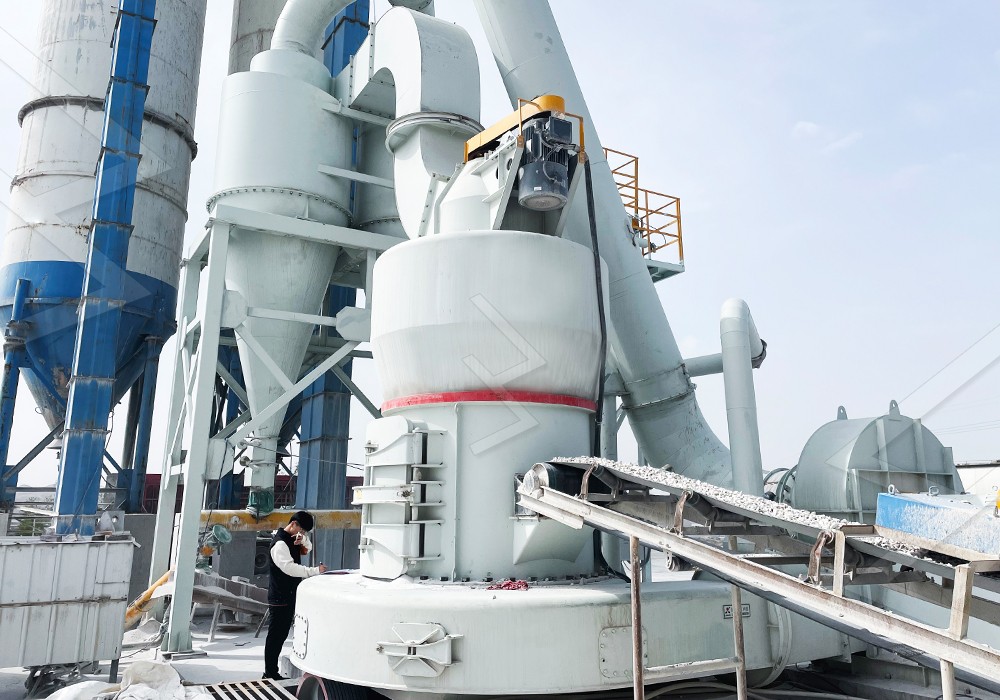Raymond Mill for Limestone Grinding in Suizhou, Hubei
Unlocking the Potential of Suizhou’s Limestone Resources
Nestled in the heart of Hubei province, Suizhou boasts abundant limestone deposits that have become the backbone of its industrial development. For decades, local processors have sought efficient grinding solutions to transform raw limestone into high-value powders for construction, chemical manufacturing, and environmental applications. The unique geological composition of Suizhou limestone—characterized by moderate hardness and consistent calcium carbonate content—demands specialized milling equipment that can deliver precise particle size distribution while maintaining operational efficiency.

The Evolution of Limestone Grinding Technology
Traditional grinding methods often struggled with the specific challenges presented by Suizhou’s limestone characteristics. Early operations typically employed basic hammer mills or ball mills, which frequently resulted in inconsistent particle size, excessive energy consumption, and significant environmental impact through dust emissions. The turning point came with the introduction of advanced Raymond Mill technology, which revolutionized limestone processing throughout the region.
Modern Raymond Mills have evolved significantly from their predecessors. Today’s systems incorporate sophisticated separation technology, improved grinding curves, and advanced dust collection systems that address both operational efficiency and environmental concerns. The latest generation of equipment can produce powders ranging from coarse aggregates to ultra-fine fillers, allowing processors to serve multiple market segments with the same core equipment.
Specialized Solutions for Suizhou’s Processing Needs
After extensive field testing and operational analysis in Suizhou’s limestone processing plants, our engineering team has identified specific equipment configurations that deliver optimal performance for this application. The MW Ultrafine Grinding Mill stands out as particularly well-suited for operations requiring high-value limestone powders. With an input size capacity of 0-20 mm and throughput ranging from 0.5 to 25 tph, this system handles the full spectrum of Suizhou limestone feed materials efficiently.
What makes the MW Ultrafine Grinding Mill exceptional for limestone applications is its innovative grinding chamber design. The absence of rolling bearings and screws within the grinding zone eliminates common failure points that traditionally plagued mills processing abrasive materials like limestone. This design consideration, combined with external lubrication access, enables continuous 24-hour operation—a critical advantage for processors serving just-in-time manufacturing customers.

Environmental Compliance and Operational Efficiency
Environmental regulations in Hubei province have become increasingly stringent, particularly regarding dust emissions and noise pollution. The integrated pulse dust collector and muffler system in the MW Ultrafine Grinding Mill addresses these concerns directly. During recent installations in Suizhou, these systems have demonstrated dust collection efficiency exceeding 99.8%, well below the regulatory thresholds. The noise reduction features maintain operational sound levels below 85 dB, creating a safer working environment while minimizing community impact.
For operations requiring different throughput specifications or dealing with varying limestone hardness, the LUM Ultrafine Vertical Grinding Mill presents an excellent alternative. With its input size of 0-10 mm and capacity range of 5-18 tph, this system incorporates German powder separating technology and Taiwanese grinding roller advancements. The reversible structure simplifies maintenance—a valuable feature when processing abrasive materials that cause gradual wear on grinding components.
Economic Advantages for Local Operations
The economic calculus for limestone processors in Suizhou has shifted dramatically with the adoption of modern grinding technology. Where traditional systems consumed 30-40% more energy for equivalent output, the latest generation equipment delivers tangible bottom-line benefits. The MW Ultrafine Grinding Mill’s energy efficiency—achieving 40% higher production capacity with the same power input compared to jet mills—translates to significant operational cost savings over the equipment lifecycle.
Local operators have reported particularly impressive results with the adjustable fineness capability (325-2500 meshes), which allows them to serve premium markets requiring specific particle size distributions. The cage-type powder selector, incorporating German technology, enables precise control over final product specifications, opening opportunities in sectors like plastics, paints, and high-performance construction materials where consistency commands price premiums.

Frequently Asked Questions
What makes Suizhou limestone particularly suitable for Raymond Mill processing?
Suizhou limestone typically exhibits consistent composition with calcium carbonate content ranging from 85-95%, moderate Mohs hardness of 3-4, and low moisture content. These characteristics make it ideal for efficient grinding with minimal energy consumption and consistent output quality.
How does the MW Ultrafine Grinding Mill handle variations in raw material size?
The system accepts feed materials up to 20 mm without requiring additional pre-crushing in most applications. The grinding chamber design and roller configuration effectively process size variations while maintaining stable operation and consistent product quality.
What environmental benefits do modern grinding systems offer?
Contemporary systems feature integrated pulse dust collectors that capture 99.8% of particulate matter, mufflers that reduce noise pollution, and closed-system designs that prevent material leakage. These features ensure compliance with Hubei’s stringent environmental regulations.
How does the adjustable fineness capability benefit processors?
The ability to produce powders from 325 to 2500 meshes allows a single operation to serve multiple market segments—from construction materials requiring coarser particles to chemical applications needing ultra-fine powders—maximizing equipment utilization and revenue potential.
What maintenance advantages do these systems provide?
Design features like external lubrication access, absence of internal screws and bearings in grinding zones, and reversible roller systems significantly reduce maintenance downtime. Local operations report 30-40% lower maintenance costs compared to traditional grinding equipment.
